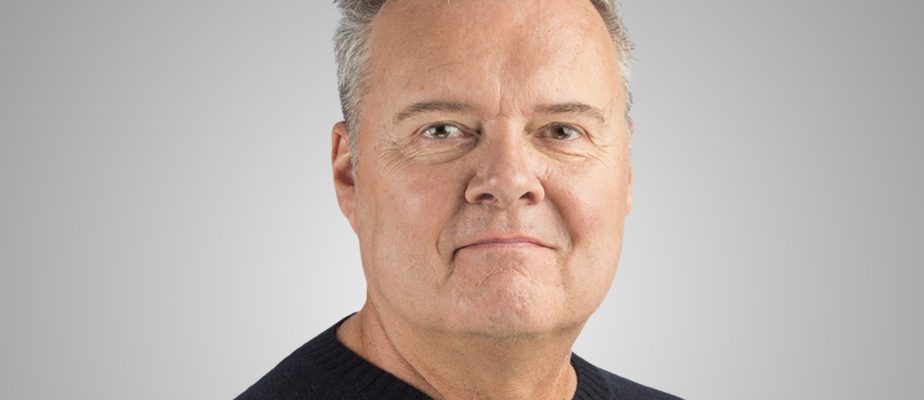The game of metamorphoses played by the media experienced quite a twist last Thursday when digital radio QUB entered television. The phenomenon of visual radio appeared at the beginning of the 2010s, but has experienced tremendous growth in recent years.
Today, most major radio networks, public or private, have studios equipped with cameras. These radio stations exploit the visual aspect to offer programs in the form of podcasts or create a buzz on social networks.
The particularity with the QUB specialty channel is that all the shows, broadcast on weekdays, from 6 a.m. to 6 p.m., will be presented live and in full on TV.
In the evenings and weekends, the best segments of the day will be rebroadcast. We plan to offer new original content, as well as podcasts.
The QUB Radio studios were already equipped with cameras. But the technique has been enriched, as has the way of presenting the images to the public (wide shots, tight shots, box in the corner of the screen, view from the control room, etc.). I admit that the result, although redundant, is impressive.
But does putting a radio host and his guests on screen make it a TV show? “I like to say that we do radio on TV with a podcast bill,” Jean-Nicolas Gagné, general director of QUB, told me. We will find the conversational atmosphere that already exists in podcasts. They remain radio hosts who are captured with audiovisual media. I expect them to drink water or wave to the stage manager during their show. There are imperfections and that’s what gives it its charm. »

PHOTO ROBERT SKINNER, THE PRESS
The director of QUB, Jean-Nicolas Gagné
The QUB website is a platform where you can discover lots of content. But unfortunately this is not where you will find the QUB channel. This is set up in the former space left vacant by the youth channel Yoopa which bowed out during the night from Wednesday to Thursday.
QUB programs are broadcast on Illico (channel 651) and Helix (channel 70) for Videotron subscribers. They will also be offered to Telus subscribers (channel 528).
During the week, we can hear Alexandre Dubé (from 6 a.m.), Richard Martineau (from 9 a.m.), Benoit Dutrizac (from 11:30 a.m.), Yasmine Abdelfadel (from 2 p.m.), Sophie Durocher ( from 3 p.m.) and Mario Dumont (from 4 p.m.). As for Mathieu Bock-Côté, he hosts a new show from Paris (Monday to Thursday, at 8 a.m.).
The QUB studios are located on the ground floor of the Archambault building. In a few months, the teams will move to new facilities at 4545, rue Frontenac where the journalists and presenters of the Montreal Journal and VAT.
We know that QUB broadcasts are mainly based on opinion and debate. In this context, are we going to play TV shows that bring together political analysts? I think about The joust or to Politics buffs.
“Yes and no,” said Jean-Nicolas Gagné. These shows are truly debate-worthy. We are more into opinion and analysis. Our rhythm is different. He is more detached. »
I regularly come across extracts from radio broadcasts that have been captured by cameras. Depending on the quality of the studio, the result can sometimes disadvantage the animators’ faces. In QUB, where sophisticated lighting has been planned, there will be no makeup artists or dressers.
“The facilitators remain the same,” adds Jean-Nicolas Gagné. They will continue to take care of themselves as they do every day. »
The question I ask myself is: will the animators change their way of doing things now that they know that they are filmed constantly and live?
I came across a study by a French researcher who was interested in the presence of cameras in the France Inter studios.
This comes to the conclusion that video changes the style of hosts, journalists and commentators. Being filmed modifies the behavior and words of people in the studio (rhythm, intensity of voice, content). In addition, it would have an impact on the relationship with the guests. The freedom of their speech would be affected by the presence of the cameras.
In short, for animators who do not already know the power of images, this change can have an impact. Let’s not forget, we recognize a presenter who is on TV more in the supermarket than one who is on the radio.
All this is fascinating and the QUB specialized channel will be an excellent laboratory in this regard for those who like to observe this type of phenomenon.
The radio is listened to, but also watched on smartphones, tablets and now on TV. This “filmed”, “visual” or “augmented” radio is revolutionizing a medium which, at the risk of repeating myself, is aging extremely well.
But is this era of “radiomorphoses” taking away from this media what is at the heart of its DNA, that is to say its mystery and the power it exercises over our imagination? The question is valid.
In any case, with QUB, we will have the choice to favor our eyes or our ears depending on our mood.
